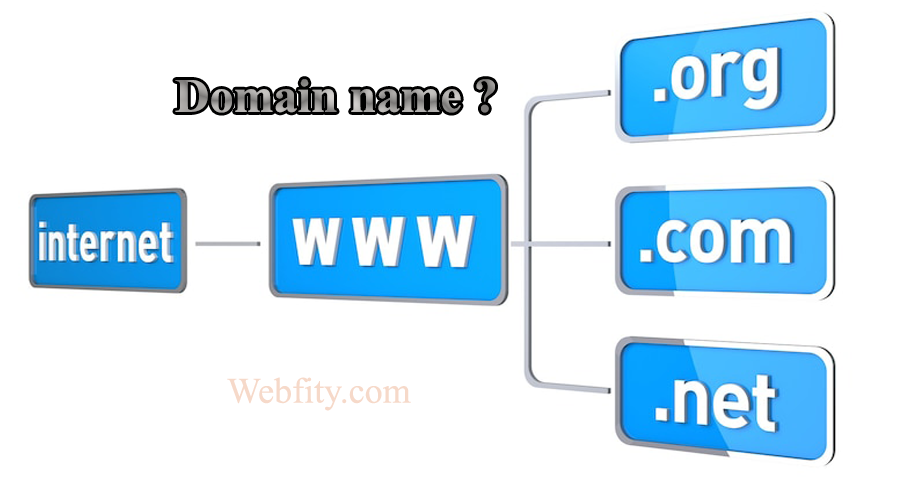Creating a website can be a daunting task, especially if you are not familiar with the technical aspects and best practices involved. However, with the right planning and guidance, you can create a website that meets your goals and expectations, and that attracts and engages your target audience.
In this guide, we will walk you through the steps and considerations for creating a website, from choosing the type of website and the creation options, to designing and developing the web pages and content, to registering a domain name and choosing a web hosting service, to optimizing your website for search engines and measuring its performance.
Here are some items to consider when creating a website
Before you start creating your website, you need to have a clear idea of what you want to achieve with your website, who you want to reach with your website, and how you want to present your website. These are some of the items that you need to consider when creating a website:
- Your website goal: This is the main purpose or objective of your website. Your website goal can be to inform, educate, entertain, persuade, sell, etc. Your website goal should be specific, measurable, achievable, relevant, and time-bound (SMART).
- Your target audience: This is the group of people that you want to attract and engage with your website. Your target audience can be defined by various criteria, such as their demographics, psychographics, behavior, needs, etc. Your target audience should be clearly identified and segmented.
- Your brand identity: This is the image and personality that you want to convey with your website. Your brand identity can be expressed by various elements, such as your logo, color scheme, font style, tone of voice, etc. Your brand identity should be consistent and distinctive.

By considering these items, you will be able to create a website that is aligned with your vision and mission, and that resonates with your audience.
Types of websites
There are many types of websites that you can create depending on your website goal and target audience. Some of the common types of websites are:
- Blog: This is a type of website that features regularly updated content, such as articles, videos, podcasts, etc. A blog can be used to share your personal or professional opinions, insights, experiences, etc. A blog can also be used to build your authority and credibility in your industry, to generate traffic and leads, to monetize your content, etc.
- E-commerce: This is a type of website that allows you to sell products or services online. An e-commerce website can be used to showcase your products or services, to process payments and orders, to manage inventory and shipping, to provide customer service, etc.
- Portfolio: This is a type of website that showcases your work, skills, or achievements. A portfolio website can be used to display your projects, samples, testimonials, etc. A portfolio website can also be used to attract potential clients or employers, to demonstrate your expertise and creativity, to build your reputation and brand, etc.
- Landing page: This is a type of website that focuses on a single goal or action. A landing page can be used to capture leads, to promote an offer, to launch a product, to register for an event, etc. A landing page usually has a clear and compelling headline, a brief and persuasive copy, a prominent and enticing call-to-action (CTA), etc.
- Educational: This is a type of website that provides information or instruction on a specific topic or skill. An educational website can be used to teach or learn something, such as a language, a software, a hobby, etc. An educational website usually has various types of content, such as text, images, audio, video, quizzes, etc.
These are some of the types of websites that you can create depending on your website goal and target audience. However, you can also create other types of websites or combine different types of websites to suit your needs and preferences.
Creation options
There are different ways that you can create your website depending on your budget, time, and skill level. Some of the creation options are:
- DIY: This is the option where you create your website by yourself using various tools and platforms. This option can be cheaper and more flexible than hiring someone else to create your website. However, this option can also be more time-consuming and challenging than hiring someone else to create your website.
- Hire a professional: This is the option where you hire someone else to create your website for you using their expertise and experience. This option can be faster and easier than creating your website by yourself. However, this option can also be more expensive and less customizable than creating your website by yourself.
- Use a website builder: This is the option where you create your website using a website builder, which is a tool or platform that allows you to create your website without coding or designing. A website builder usually has various features and templates that you can use to create your website. This option can be a good balance between creating your website by yourself and hiring someone else to create your website.
These are some of the creation options that you can choose depending on your budget, time, and skill level. However, you can also use other creation options or combine different creation options to suit your needs and preferences.

Web pages
A web page is a single document or file that contains the content and elements of your website, such as text, images, videos, etc. A web page is usually accessed by a web browser using a URL (Uniform Resource Locator), which is the address of the web page.
There are different types of web pages that you can create depending on your website type and goal. Some of the common types of web pages are:
- Home page: This is the main or first page of your website that welcomes and introduces your visitors to your website. Your home page should include your logo, headline, value proposition, CTA, navigation menu, etc.
- About page: This is the page of your website that tells your visitors who you are and what you do. Your about page should include your story, mission, vision, values, team, etc.
- Contact page: This is the page of your website that allows your visitors to get in touch with you. Your contact page should include your contact information, such as your email, phone number, address, social media links, etc. Your contact page should also include a contact form that allows your visitors to send you a message directly from your website.
- Product or service page: This is the page of your website that showcases your products or services that you offer to your visitors. Your product or service page should include your product or service name, description, features, benefits, price, CTA, etc.
- Testimonial or review page: This is the page of your website that displays the feedback or opinions of your customers or clients about your products or services. Your testimonial or review page should include your customer or client name, photo, rating, comment, etc.
- FAQ (Frequently Asked Questions) page: This is the page of your website that answers the common questions or concerns that your visitors may have about your products or services. Your FAQ page should include your question and answer pairs, organized by category or topic, etc.
These are some of the types of web pages that you can create depending on your website type and goal. However, you can also create other types of web pages or combine different types of web pages to suit your needs and preferences.
Design and Content
Design and content are the two main components of your website that determine how your website looks and what your website says. Design and content are both important for creating a website that is attractive, user-friendly, and effective.
To create a good design and content for your website, you need to consider various factors, such as:
- Layout: This is the arrangement and organization of the elements on your web page, such as text, images, videos, etc. Your layout should be clear and consistent, and should follow the principles of visual hierarchy, alignment, contrast, balance, etc.
- Color: This is the hue or shade that you use for the elements on your web page, such as background, text, buttons, etc. Your color should be harmonious and appealing, and should match your brand identity and message. You can use tools like Adobe Color or Coolors to create a color palette for your website.
- Typography: This is the style and appearance of the text on your web page, such as font type, size, weight, color, etc. Your typography should be legible and readable, and should complement your design and content. You can use tools like Google Fonts or Font Squirrel to choose a font for your website.
- Images: These are the pictures or graphics that you use on your web page to illustrate or support your content. Your images should be high-quality and relevant, and should enhance your design and message. You can use tools like Unsplash or Pixabay to find free images for your website.
- Videos: These are the moving images or clips that you use on your web page to demonstrate or explain your content. Your videos should be high-quality and engaging, and should not distract from your design and message. You can use tools like YouTube or Vimeo to host and embed videos on your website.
- Copy: This is the written text that you use on your web page to communicate or persuade your visitors. Your copy should be clear and concise, and should match your tone of voice and audience.
- CTA: This is the element that you use on your web page to prompt your visitors to take a specific action, such as sign up, buy, download, etc. Your CTA should be prominent and enticing, and should use a verb and a benefit. You can use tools like Canva or Crello to create a CTA for your website.
By creating a good design and content for your website, you can create a website that is attractive, user-friendly, and effective.
Domain name

A domain name is the unique name or address of your website that identifies it on the internet, such as www.example.com. A domain name is composed of two parts: a top-level domain (TLD), which is the suffix or extension of the domain name, such as .com, .net, .org, etc., and a second-level domain (SLD), which is the name or word that precedes the TLD, such as example.
A domain name is important for creating a website that is memorable, credible, and professional. To choose a domain name for your website, you need to consider various factors, such as:
- Availability: This is the factor that determines whether a domain name is already registered or not. You need to choose a domain name that is available and not taken by someone else. You can use tools like Microsoft Bing Domain Name Search or GoDaddy Domain Name Search to check the availability of a domain name.
- Relevance: This is the factor that determines how closely a domain name matches your website topic and content. You need to choose a domain name that is relevant and descriptive of your website. You can use tools like NameMesh or Lean Domain Search to generate relevant domain name ideas.
- Simplicity: This is the factor that determines how easy a domain name is to remember and type. You need to choose a domain name that is simple and short, and that avoids numbers, hyphens, or misspellings. You can use tools like Domainr or BustAName to find simple domain name ideas.
- Brandability: This is the factor that determines how unique and distinctive a domain name is. You need to choose a domain name that is brandable and catchy, and that conveys your brand identity and message. You can use tools like NameStation or Panabee to create brandable domain name ideas.
By choosing a domain name for your website, you can create a website that is memorable, credible, and professional.
Web hosting
Web hosting is the service that provides the space and resources for your website to be stored and accessed on the internet. Web hosting is important for creating a website that is fast, secure, and reliable.

To choose a web hosting service for your website, you need to consider various factors, such as:
- Type: This is the factor that determines the level of control and customization that you have over your website. There are different types of web hosting services, such as shared hosting, VPS hosting, dedicated hosting, cloud hosting, etc. Each type of web hosting service has its own advantages and disadvantages, depending on your website needs and preferences.
- Features: This is the factor that determines the quality and quantity of the resources and services that you get from your web hosting service. There are different features that you need to look for in a web hosting service, such as disk space, bandwidth, uptime, speed, security, backup, support, etc. Each feature of a web hosting service has its own importance and impact on your website performance and user experience.
- Price: This is the factor that determines how much you pay for your web hosting service. There are different prices that you need to consider in a web hosting service, such as monthly or annual fees, setup fees, renewal fees, etc. Each price of a web hosting service has its own value and affordability, depending on your website budget and expectations.
By choosing a web hosting service for your website, you can create a website that is fast, secure, and reliable.
SEO
SEO (Search Engine Optimization) is the process of improving your website’s visibility and relevance in the search results of search engines like Microsoft Bing or Google. SEO is important for creating a website that attracts and engages more organic traffic and conversions to your website.
To optimize your website for SEO, you need to consider various factors, such as:
- Keywords: These are the words or phrases that users type into search engines to find what they are looking for. Keywords are the foundation of SEO, as they help to identify the topics and intents of your target audience, and to create relevant and engaging content that matches their needs. You can use tools like Microsoft Bing Keyword Planner or Google Keyword Planner to conduct keyword research and analysis for your website.
- Content: This is the information and value that you provide to your visitors through your website. Content is the core of SEO, as it helps to communicate and persuade your visitors, and to provide a better user experience for them. You can use tools like Microsoft Bing Webmaster Tools or Google Search Console to optimize your content for SEO.
- Technical: This is the aspect of your website that affects its functionality and performance, such as speed, security, mobile-friendliness, etc. Technical SEO is essential for SEO, as it helps to improve your website’s ranking and usability, and to avoid any issues or errors that affect your website. You can use tools like Microsoft Bing Site Scan or Google PageSpeed Insights to optimize your website for technical SEO.
- Off-page: This is the aspect of your website that affects its popularity and authority, such as backlinks, social media, reviews, etc. Off-page SEO is important for SEO, as it helps to increase your website’s exposure and credibility, and to build trust and loyalty with your visitors. You can use tools like Microsoft Bing Link Explorer or Google Analytics to optimize your website for off-page SEO.
- Effective keyword research strategies for website optimization
By optimizing your website for SEO, you can create a website that attracts and engages more organic traffic and conversions to your website.
Web analytics
Web analytics is the process of collecting and analyzing data on your website performance and user behavior, such as traffic sources, page views, bounce rate, conversion rate, etc. Web analytics is important for creating a website that is effective and successful.

To use web analytics for your website, you need to consider various factors, such as:
- Goals: These are the specific and measurable outcomes that you want to achieve with your website, such as sign ups, sales, downloads, etc. Goals are the basis of web analytics, as they help to define and measure your website success and progress. You can use tools like Microsoft Bing Webmaster Tools or Google Search Console to set up and track your goals for your website.
- Metrics: These are the quantitative indicators that show how your website is performing in terms of your goals, such as impressions, clicks, CTR, conversions, etc. Metrics are the key of web analytics, as they help to monitor and evaluate your website performance and user experience. You can use tools like Microsoft Bing Webmaster Tools or Google Analytics to collect and analyze your metrics for your website.
- Insights: These are the qualitative interpretations that explain why your website is performing the way it is, and what you can do to improve it, such as strengths, weaknesses, opportunities, threats, etc. Insights are the value of web analytics, as they help to optimize and enhance your website strategy and tactics. You can use tools like Microsoft Bing Webmaster Tools or Google Analytics to generate and apply your insights for your website.
By using web analytics for your website, you can create a website that is effective and successful.
Conclusion
Creating a website can be a rewarding and fulfilling experience, but it can also be a challenging and complex one. By following this guide, you can:
- Choose the type of website and the creation option that suits your website goal and target audience
- Design and develop the web pages and content that reflect your brand identity and message
- Register a domain name and choose a web hosting service that make your website memorable, credible, and professional
- Optimize your website for SEO that attracts and engages more organic traffic and conversions to your website
- Use web analytics that measure and improve your website performance and user behavior
By doing so, you can create a website that is functional, attractive, user-friendly, and successful.
